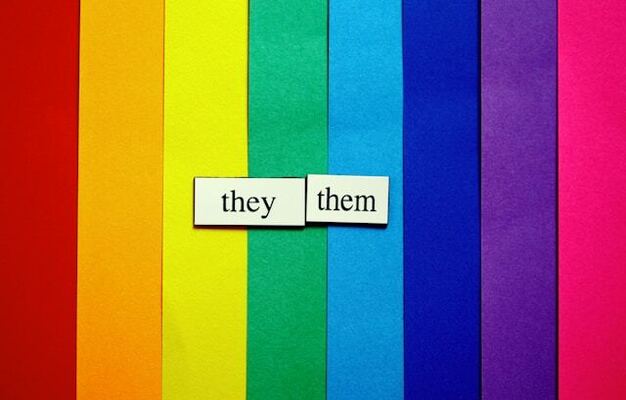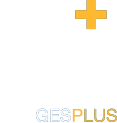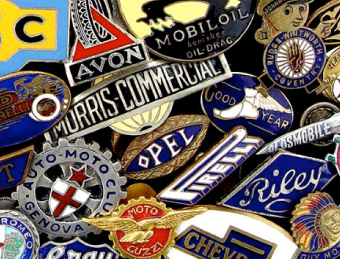What is a Pronoun Name Badge?

As society becomes more aware of the importance of respecting individuals’ identities, the adoption of pronoun badges is becoming a common practice in diverse environments. For example, in the workplace, major retail companies like Marks & Spencer offer optional pronoun name badges that display the staff’s preferred pronouns. In academic settings, many universities offer free pronoun badges to students and staff to those who want to declare their pronouns proudly. But what is a pronoun badge and why are they an important part of promoting inclusivity in a range of settings?
Understanding Gender Pronouns
Gender pronouns describe the words we use to talk about someone’s gender. These words include ‘he’, ‘she’, ‘they’ and other gender-neutral options. Gender pronouns are chosen based on how an individual identifies.
What are Neopronouns
Neopronouns also referred to as non-binary pronouns or gender-inclusive pronouns are a category of gender-neutral pronouns that go beyond traditional options like ‘he’, ‘she’ and ‘they’. Examples of neopronouns include terms like ‘ze’ and ‘zir’. These pronouns are used by people who may not identify with gender classifications like male and female and prefer to use language that reflects their unique gender identity.
Understanding Gender Identities
Gender identities go beyond the traditional expressions of male and female, People identify as transgender, non-binary, intersex, genderqueer or genderfluid among other terms. Respecting and acknowledging diverse gender identities is essential for creating an inclusive and supportive environment.
What is a Pronoun Badge?
As the name suggests, a pronoun badge is a way to display your preferred gender pronoun. It serves as a visual cue for others to use the correct pronouns when addressing or referring to the individual wearing the badge. Pronoun badges are a tangible expression of an individual's gender identity. These badges typically declare pronouns, such as 'he/him,' 'she/her,' and 'they/them,' as well as variations like ze zir pronouns that provide a straightforward way for people to communicate how they wish to be addressed.
What is a Gender Pronoun Name Badge?
This type of ID badge is a great way to incorporate gender pronouns into a variety of diverse environments like workplaces, promotional events, university open days and anywhere where name badges are used. By offering the option of having a gender pronoun name badge, organisations not only support diverse identities but also contribute to society's shift towards recognising and celebrating gender diversity.
Why Do People Wear Pronoun Badges?
One of the main reasons people choose to wear pronoun badges and pronoun name badges is to help normalise the fact that we shouldn’t always assume someone’s gender. There are many other reasons why individuals wear pronoun badges which include:
- Helps to foster an inclusive environment - providing options for pronoun name badges promotes inclusivity, especially for transgender and non-binary individuals. In an age where many gender nonconforming individuals and transgender people are discriminated against in the workplace, employers and establishments who encourage and celebrate the different gender expressions create an atmosphere that considers and includes everyone. By offering a platform to display pronouns like 'they/them,' 'ze/zir,' and others, workplaces and universities create a space where diverse gender identities are recognised and accepted.
- Helps to avoid instances of misgendering - assuming the gender of someone can be an awkward and sometimes uncomfortable situation. Pronoun badges serve as a preventive measure against misgendering or making assumptions about an individual's gender identity based on appearance. This helps create a more respectful and understanding environment, reducing the potential for discomfort or upset among colleagues or between staff and students.
- Helps to promote the use of neopronouns - Neopronouns, such as 'ze/zir,' are a major part of the evolving understanding of gender identity. Pronoun badges act as a means to empower individuals using these non-binary pronouns, which adds to the broader acceptance of diverse gender expressions.
- Encourages a culture of respect - Whether in the workplace, at university or a conference, pronoun badges signify a commitment to respecting individual identities and differences. By encouraging the use of pronouns, whether traditional or neopronouns, employers, academic leaders and event promoters can create a culture of respect, where everyone's identity is acknowledged and valued.
- Can help to educate others - Gender pronoun badges and pronoun name badges encourage open conversations about gender identity, eliminating assumptions and promoting understanding. This proactive approach helps break down stereotypes and contributes to a more informed and compassionate community.
How to Design Custom Pronoun Badges
If you’ve decided to create custom gender pronoun badges or pronoun name badges for your company, university, charity or any other organisation, we can help. Badge Plus has years of experience when it comes to badgemaking and custom badge design.
Creating a custom pronoun badge involves several steps to ensure that it accurately represents individual preferences. Let’s break down the steps and things to consider when designing a gender pronoun badge or a pronoun name badge.
- Gather pronoun information - Collect the pronoun preferences from individuals who will be wearing the badges. Ensure you account for a variety of pronouns, including gender-neutral options and neopronouns.
- Select the badge type and size - At Badges Plus, we create a wide range of badges including enamel pin badges, button badges, glitter badges, 3D badges, woven badges and more. All options are customisable and make a great canvas for designing any kind of pronoun badge.
- Decide on the design layout and colour scheme - be sure to create a visually appealing layout for the badge and consider the arrangement of pronouns and any additional design elements like logos or emblems. If you are designing a pronoun name badge, be sure to consider the font sizes of the name and the pronouns so they are clear and easy to read.
- Upload your design to receive a quote, and then our team of designers will create your custom pronoun badge.
If you have something in mind and you’re struggling to turn an idea into a winning badge design, don’t worry. We offer a free design service where our creative team can collaborate with you to create artwork for your badge that aligns with your vision.
Create Bespoke Pronoun Badges For All Occasions
Pronoun badges can be useful in any situation and are great for bringing awareness to the various pronouns that exist. Whether you’re a part of the LGBTQ+ community or a proud ally, pronoun name badges play a crucial role in creating an inclusive and respectful environment in universities, workplaces, conferences, promotional events and much more.
If you are ready to embrace inclusivity and celebrate gender diversity, Badges Plus can help you create a range of gender pronoun badges to suit any occasion. For more information about our bespoke badges, contact our team today.
- December 2024 (1)
- September 2024 (1)
- August 2024 (2)
- July 2024 (2)
- June 2024 (2)
- May 2024 (2)
- April 2024 (2)
- February 2024 (2)
- January 2024 (2)
- November 2023 (1)
- October 2023 (1)
- September 2023 (2)
- August 2023 (1)
- July 2023 (2)
- June 2023 (1)
- May 2023 (1)
- April 2023 (2)
- March 2023 (1)
- February 2023 (1)
- January 2023 (1)
- December 2022 (3)
- November 2022 (2)
- September 2022 (1)
- July 2022 (1)
- June 2022 (1)
- May 2022 (1)
- April 2022 (1)
- March 2022 (1)
- February 2022 (1)
- January 2022 (1)
- October 2021 (2)
- September 2021 (2)
- August 2021 (2)
- July 2021 (2)
- June 2021 (1)
- May 2021 (1)
- April 2021 (2)
- March 2021 (2)
- February 2021 (2)
- January 2021 (1)
- December 2020 (2)
- November 2020 (2)
- October 2020 (4)
- September 2020 (1)
- July 2020 (1)
- May 2020 (1)
- April 2020 (1)
- March 2020 (3)
- February 2020 (2)
- September 2019 (1)
- August 2019 (1)
- May 2019 (1)
- April 2019 (1)
- March 2019 (1)
- January 2019 (1)
- December 2018 (1)
- November 2018 (2)
- October 2018 (1)
- September 2018 (1)
- June 2018 (1)
- May 2018 (3)
- April 2018 (1)
- February 2018 (2)
- January 2018 (1)
- December 2017 (1)
- November 2017 (1)
- October 2017 (3)
- September 2017 (1)
- August 2017 (1)
- July 2017 (2)
- May 2017 (1)
- July 2016 (1)
Enquire Now










